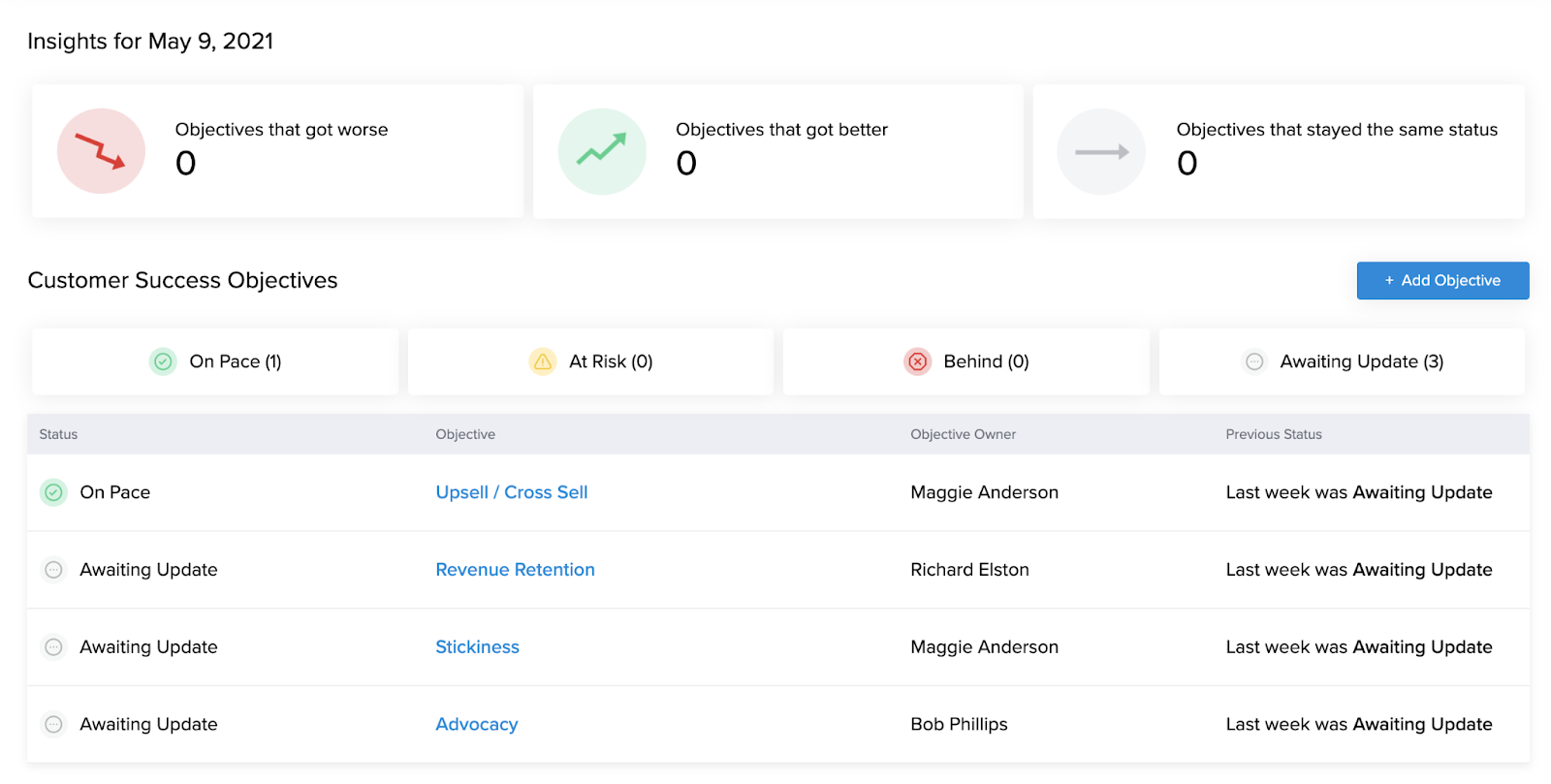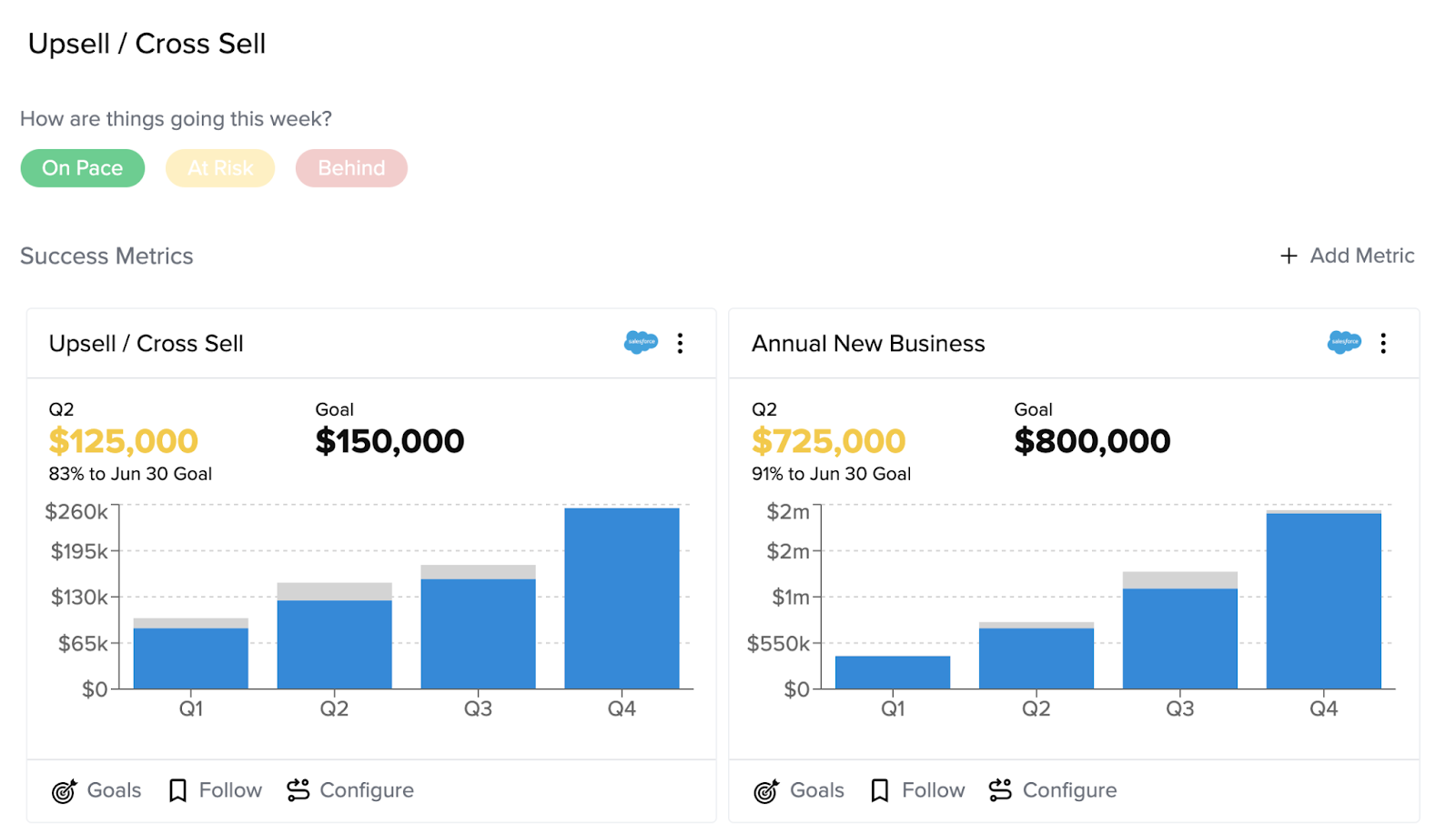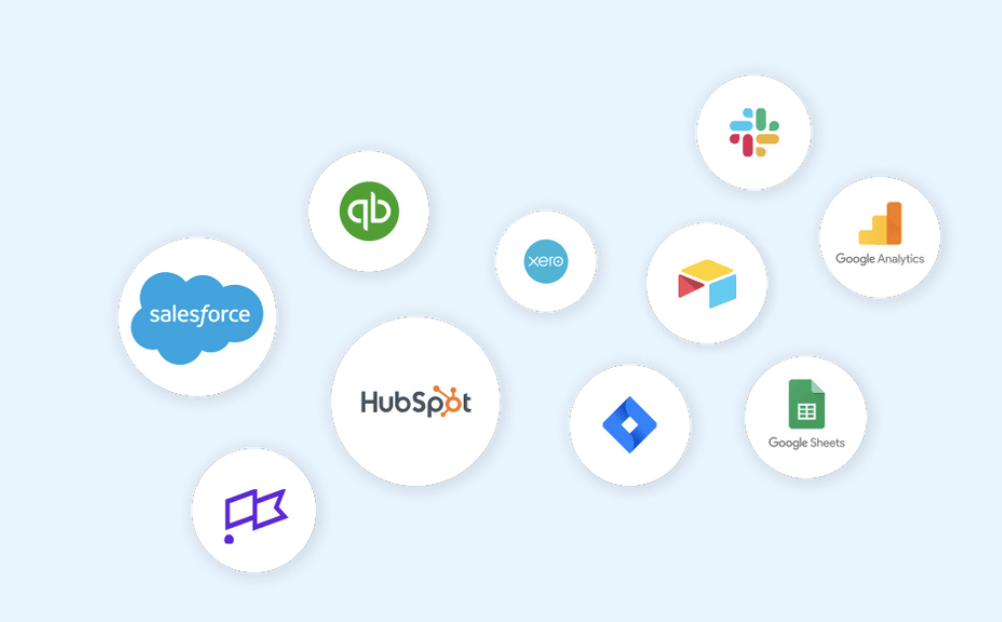
As the OKR Framework becomes more and more popular amongst growth stage companies, many strategy and ops leaders are tasked with the implementation and execution of the framework across their organization. While OKRs are a great way to create alignment and accountability, it's important to keep in mind that just as important as the framework itself is the cadence that's established and the solution that’s used for reviewing OKRs at a leadership level.
For many companies, the failure to implement the right review process can lead right back to many of the bad habits and challenges that plagued the company in the first place.
Whether falling into the trap of building static dashboards with countless KPIs or manually trying to report on company objectives through Excel, PowerPoint, or project management tools, time and time again we see companies fail to adopt the OKR methodology or any operating framework because they don't establish a rhythm for proactively building and taking action on company objectives.
To help solve this challenge, one of the first things we recommend to any strategy and ops leader is to first think of how they want to review OKRs with their leadership team. One of the most successful avenues we've seen is by starting with an OKR Dashboard.

For those that are unfamiliar with OKR Dashboards, we previously wrote about what an OKR Dashboard is, how it can help build your OKR Report, and why we recommend OKR tools as a way to run your company's roll out and execution of objectives and key results.
Today, we will touch on how to build an OKR dashboard, and how it can set you on a path for success. To do so, let's start with the basics. Here are three things we recommend in building your OKR dashboard, and a bonus expert tip:
1. Start with the Objectives owned by members in the meeting
We know how easy it is to get bogged down or overwhelmed by showing any and all objectives that might be relevant for that meeting. While we recommend you easily be able to navigate across objectives, don't start with a full view into everything.
2. Surface Insights highlighting what's changed
The easier you make it to showcase what got better, worse, or stayed the same, the easier it will be to know where to focus the conversation. Whether allocating more resources, collaborating on next steps to solve new issues, or doubling down on areas of success, this helps surface easy wins for your team.
3. Build an OKR Scorecard, but be ruthless about what's important
One common challenge with OKRs is that the key results that are often connected with performance of the business can be scattered across multiple objectives, making it difficult to navigate to the data you need to see for investor meetings, board decks, or company all-hands meetings. That's why we recommend building an OKR Scorecard that highlights the performance of key results or key performance indicators tied to your company themes. Yes, that's right, we believe the debate of OKR vs KPI should instead be OKRs and KPIs!

Bonus Tip: Connect Your Data Sources!
We see a lot of companies struggle to roll out OKRs or any type of framework, because of false starts and lack of adoption. Much of the pain behind getting a framework stood up comes from the manual work that has been traditionally associated with the process. If you are using free OKR tools, project management software, or even Google Sheets, you are likely experiencing pushback from team members needing to update yet another platform. Automate your KPIs and key results by integrating your existing data sources to your OKR Dashboard. This will alleviate the frustration from team members and save you countless hours tracking down updates.

So now you have the basic principles to help build your first OKR Dashboard. But you might be asking yourself, 'How in the world am I going to do all that in one place?' Well, do we have some great news for you!
From our experience working with leading strategy and ops leaders, we built Elate to showcase the OKR Dashboard example we outlined above. Our belief is that it isn't just OKR examples we should be looking for as strategy and ops leaders, but more importantly, it's the OKR Dashboard examples that we should be focused on implementing.
Even the most well-written OKR will fall short if there isn't a structure in place to support the framework across every level of the business. For high-growth companies, an OKR Dashboard can serve as the central hub to cut through the noise and chaos, and surface the important information connected to your company themes and priorities.
If you're interested in learning more about how Elate is working with other strategy and operations leaders to help deliver an OKR Dashboard that helps drive accountability for goals and outcomes, automate follow-up, and communicate your company’s vision to the whole organization, contact us today for a demo!


